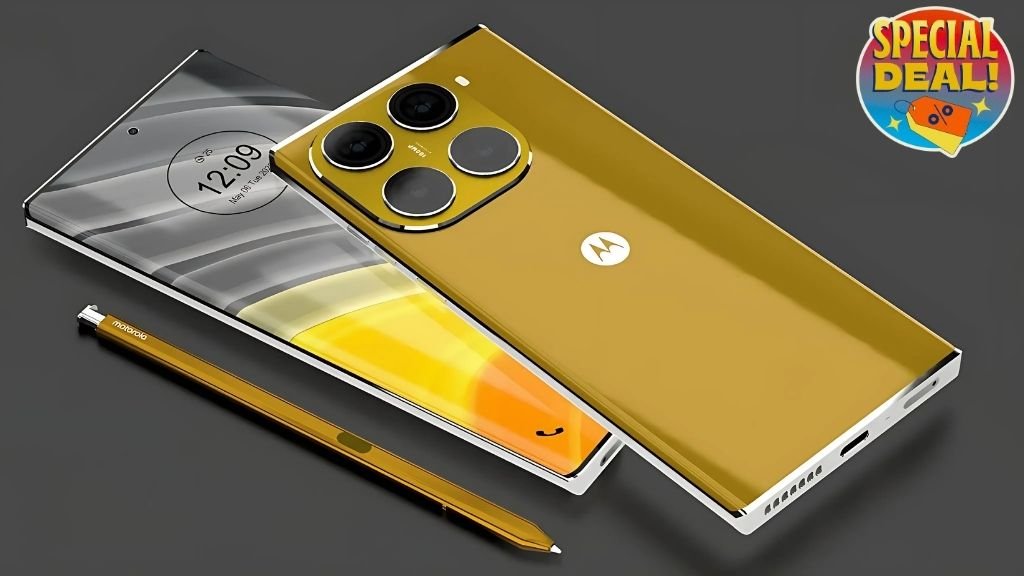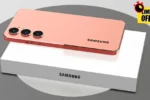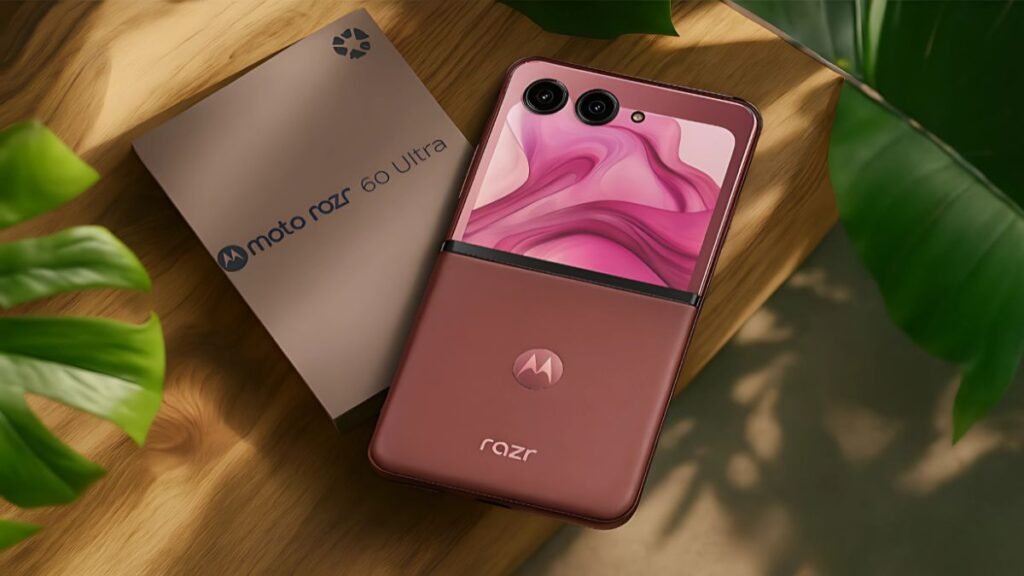Motorola Edge 70 5G Launched: Short truth up front: despite “Edge 70 5G launched” headlines floating around social feeds, an official Motorola product page or press note for a phone specifically called Motorola Edge 70 5G hasn’t been published at the time of writing. That doesn’t make the idea any less interesting—if anything, it raises the stakes. In this practical, no-fluff guide, we separate rumor from reality, outline credible expectations, and show you exactly how to buy well—whether you’re planning to jump the moment a real listing appears or you’re choosing the best alternative today.
Launch Reality Check: What’s Official, What’s Only Buzz
The phrase “launched” gets used loosely online: trailer videos, concept renders, alleged retail cards, and “shop now” pages on third-party blogs often appear before a brand has said a word. For the Edge 70 5G, that’s where we are: plenty of noise, zero official listing with a buy button. Our advice is simple and evergreen—before you plan a purchase, look for (1) a manufacturer page with specs and SKUs, (2) carrier/retail listings with model numbers you can verify, and (3) a dated press note or brand post. If those three aren’t present, treat everything as pre-launch chatter. It’s not that leaks can’t be right; it’s that they aren’t binding. When the real listing arrives, pricing, storage tiers, supported 5G bands, and warranty terms become concrete. Until then, the smartest thing you can do is prep your budget, define your must-haves, and pick a fallback you’d be happy to own if the rumored device takes longer (or turns out different) than expected.
Design Expectations: Lighter, Flatter, and Pocket-Proud
Recent Edge-series phones shifted toward slimmer frames with flatter rails, soft curves on the back, and a camera bar that keeps desk wobble in check. Expect a similar design language if an Edge 70 5G appears: a matte, fingerprint-resistant finish, clicky buttons aligned for landscape recording, and a top earpiece tuned to double as a second speaker for better stereo. Weight matters more than most spec sheets admit; if the phone can land around the 180–195 g zone while housing a large battery, it will feel comfy for long doom-scrolls and late-night reading. We also expect a proper lip around the camera glass and (ideally) IP68 resistance. That combo transforms a pretty device into a stress-free daily driver—rain friendly, backpack tolerant, and less likely to slip when you’re shooting at awkward angles.
Display Wishlist: 1.5K or FHD+ AMOLED at 120–144 Hz
The modern mid-premium sweet spot is a 120–144 Hz AMOLED with solid outdoor visibility and a responsible low-brightness curve at night. Whether Motorola opts for a sharp 1.5K panel or a power-friendly FHD+, the experience we want is the same: readable at noon, calm at 2 a.m., and crisp at the edges for gaming flicks and text cursor placement. If you’re display-sensitive, watch for high-frequency PWM dimming (2 kHz+), a neutral “Natural” color mode that doesn’t blue-shift whites, and a decent anti-reflection layer. The single best five-minute test you can do in a store is this: (1) max brightness in sunlight on Maps, (2) 1% brightness in a dark corner on an e-book, (3) fast scroll in a long thread. If all three feel easy, you’ll love the screen long term.
Performance Picture: Snapdragon 7-/8-Class or Dimensity 8000-Class
If “Edge 70 5G” arrives, chip candidates naturally cluster around the latest Snapdragon 7+/8s or Dimensity 8000-series tiers—platforms known for the magic mix of speed and efficiency. What matters isn’t a single benchmark; it’s sustained performance. Look for a large vapor chamber, graphite layers, and thermal scheduling that prefers steady clocks over spikes. That’s what keeps 4K recording stable, navigation cool, and game frame-times smooth after minute 20. RAM/storage sweet spots are 8/256 GB and 12/256 or 12/512 GB on UFS 3.1/4.0. If you edit a lot of 4K or maintain giant offline playlists, 512 GB is the serene, two-year choice. Bottom line: prioritize quiet speed and thermal behavior over a headline score that lasts five minutes.
Battery & Charging: Practical Beats Flashy
The recent Edge family has leaned into bigger cells and faster top-ups. For an Edge 70 5G, a 5,000–5,200 mAh battery with 68–125 W wired charging would fit the line’s trajectory, and we’d love to see wireless charging (even at 15 W) for desk convenience. What you’ll feel every day are three things: (1) adaptive refresh that dials down on static pages, (2) standby power discipline so overnight drain is minimal, and (3) intelligent charging that slows near full to protect long-term health. Practical tip that always works: treat 15–25 minute coffee-break charges as your “range extender.” They deliver the best time-to-percent ratio and keep temps sensible.
Cameras: What a Credible Triple Setup Would Look Like
Motorola’s better Edges have focused on a capable main sensor, a truly useful ultrawide (ideally with autofocus for macro), and either a short tele (2–3×) or a higher-reach periscope. For an Edge 70 5G to excite, we’d want:
- Main: 50 MP with OIS, large sensor, restrained HDR, and natural skin tones.
- Ultrawide: 12–50 MP with AF for close-ups and consistent color match to the main.
- Telephoto: 10–50 MP at 3× or 5× with OIS; keep detail before the crop.
Video basics that matter: 4K30/60 across lenses, stable walk-and-talks, clean audio pickup, and exposure ramps that don’t “pop” when you step from shade to sun. You won’t notice the megapixels after the first week—but you will notice repeatability: tap, shoot, trust the result.
Software & Updates: Cleaner Than You Remember
Recent Motorola phones feel lighter in hand and in software. Expect a mostly stock-Android look, tidy quick toggles, and privacy prompts that read like real language. The make-or-break detail is support policy. If Edge 70 5G is real, we want 3+ years of OS and 4–5 years of security as table stakes. Feature drops that improve camera pipelines and battery planning over time are the quiet wins that keep a phone feeling “new enough” deep into year two.
Connectivity: 5G Bands, Wi-Fi 6E/7, NFC, and eSIM
For India and most global markets, broad SA/NSA 5G bands, dual-SIM (physical/eSIM mix), reliable NFC for payments, and Wi-Fi 6E or 7 are the checklist. The thing you’ll notice isn’t speed; it’s reliability—fewer drops when you ride between cells, quicker GPS locks in busy city cores, and Bluetooth that pairs and stays paired. If a phone claims Wi-Fi 7, confirm your router supports the wider 320 MHz channels; otherwise you’re not seeing the headline throughput anyway.
Who Should Short-List an Edge-Series Upgrade
If your day is chats → camera → maps → reels → calls, the Edge line’s recent direction—bright screens, calm software, bigger batteries—fits like a glove. You’ll feel the upgrade most when you:
- shoot people in mixed indoor light,
- navigate for an hour while streaming music, and
- record walk-and-talk clips without clutching a power bank.
If you prioritize 10× periscope zoom, stylus workflows, or pro-video codecs, you’re shopping a different tier (and price) either way.
The Smart Pre-Launch Playbook (If You’re Waiting)
- Set a hard budget (MRP and effective price).
- Pick your storage floor (256 GB minimum if you shoot lots of video).
- Define deal-breakers (wireless charging, IP rating, telephoto reach).
- List two alternates you’d happily buy today if timelines slip.
- Check your trade-in value now; it often drops after launch events.
This way, if the real Edge 70 5G listing appears at 10 a.m. Tuesday, you already know whether to tap “Buy” or pivot to Plan B.
Best Alternatives You Can Actually Buy Today
- Battery-first pick: a recent Edge with a 5,000 mAh+ cell and 60–125 W charging—think “one day plus buffer” with 20-minute top-ups.
- Camera-centric pick: a model with OIS main + AF ultrawide + 3× tele; look for natural skin tones and 4K across lenses.
- Value pick: a slightly older flagship SoC (last year’s top chip) at a mid-tier price; you’ll feel it in sustained speed and better thermals.
If you’re choosing this week, the “older flagship” strategy often beats waiting—especially during seasonal sales.
Hands-On Tests That Tell You Everything in 10 Minutes
- Brightness & comfort: test the screen at max in sunlight and at 1% in a dark corner—look for readability and eye comfort.
- Thermal sanity: record 4K for 4–5 minutes, then scroll/social for 5 more—surface temp should stay comfortable.
- Camera reality: take a portrait at dusk, an indoor ultrawide, and a 10-second walk-and-talk; if all three look good, you’re set.
- Speaker clarity: play a podcast at medium volume—voices should be crisp without hissy treble.
- Haptics: type a few lines—do taps feel short and precise or buzzy and vague?
Battery Habits That Extend Real-World Range
- Short, frequent top-ups (15–25 min) beat single deep drains daily.
- Leave adaptive brightness/refresh on; they save watts you don’t see.
- Avoid heat (hot cars, pillows); nothing ages lithium faster.
- Cap overnight charging where supported, or unplug in the morning.
Accessories That Actually Add Value
A tilt-adjustable stand for video calls and desk use, a thin lip case that protects the camera without ballooning weight, and a certified fast charger with an e-marked cable are the only three most people need. Creators can add an on-phone mic and clip-on ND filters; travelers will love a compact 3-port GaN adapter more than a second power bank.





